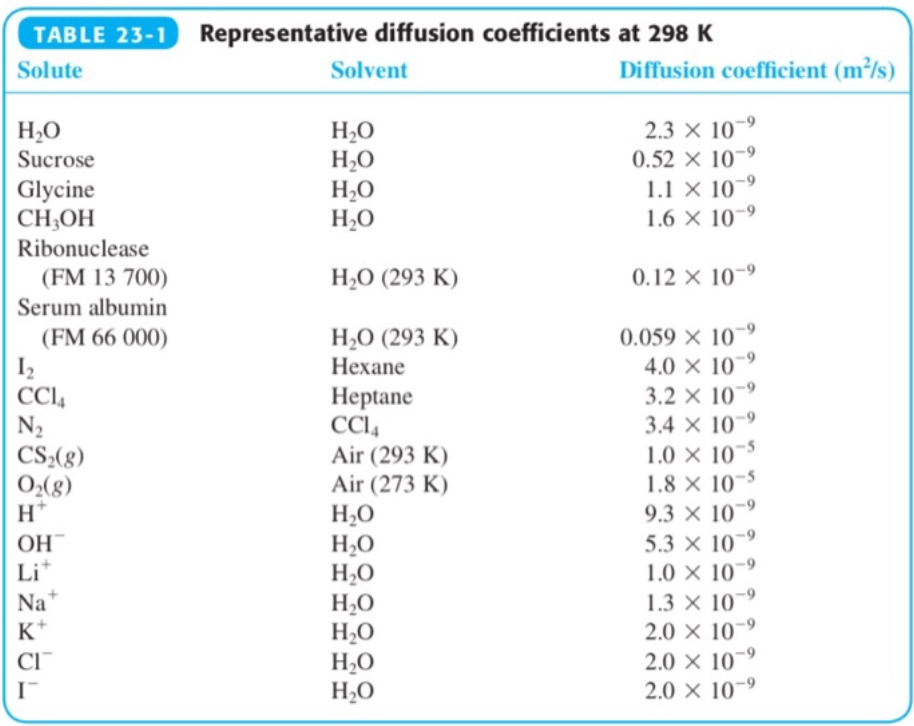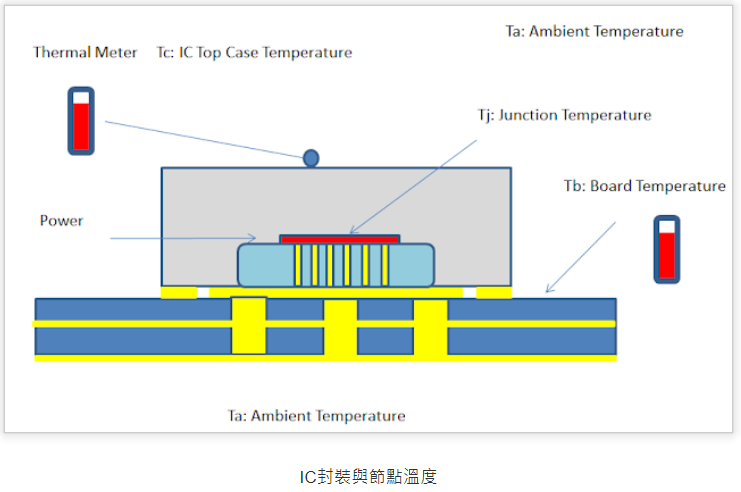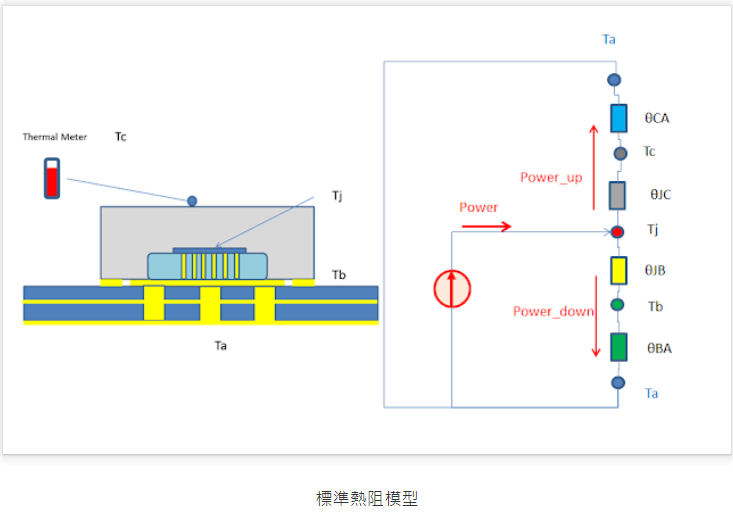”流 (Flow)“ 或 “波 (Wave)” 的偏微分方程 (PDE)
“流 (flow)” 或是 “波 (wave)” 都是常見或常感知的現象,例如水流、水波、寒流、熱流。 Flow or wave 是時間和空間連續或整體行爲 (global or continuous behavior over space and time). 我們不會只看水中單點瞬間的運動判斷這是一個 flow or wave, 因爲可能是水流,水波,甚至渦流。因此需要分析時間和空間連續或整體行爲。如何進行?
有幾種方式:
- 利用連續性 (bottom-up approach): 用偏微分方程描述每一點附近空間和時間的關係。藉著解偏微分方程 (PDE),可以得到整體的行爲。一般的 CV (computer vision) approach, 基本都和 PDF 的解法有關。
- 把 PDE 轉換成積分形式,例如 Maxwell PDE equation 的積分形式。此時已經不是只描述局部行為,而是一個區域或是整體的行為。一般積分形式是為了闡述物理意義,直接求解很困難。但如果可以把解 PDE 轉換成 (積分) cost function optimization,就可以:(1) 利用 deep neural network 近似這個 cost function; (2) 使用 real data training for optimization 得到近似解。
- 直接描述整體行爲 (up approach):例如電路學用 KVL, KCL (Kirchikov Voltage/Current Laws) 簡化代替 Maxwell equations,並且定義電阻、電容、電感等,取代 local transport equation. 或者用熱力學代替統計力學,電子學代替固態物理學。雖然只能得到簡化的 high level solution. 不過在很多實際應用,這樣 high level solution 已經足夠,例如電子電路分析,或是 IC 散熱分析。
本文 focus on PDE 因爲可以看到更基本的物理意義。如上所述,要描述每一點附近空間和時間的關係,需要定義
**(1) 每一點 (空間和時間)要描述的物理量, e.g. (scalar) density, driving force, (vector) flux/motion; **
**(2) 物理量和時間的關係, continuity equation; **
**(3) 物理量對空間的關係, transport equation; **
(4) combine continuity equation and transport equation 得到完整的 flow or wave PDE.
每一點 (空間和時間) 物理量:flux (通量)
Flux 是一個向量 (或是向量場),描述 magnitute and direction of the flow for transport phenomen. 簡單說就是帶有方向的 flow rate per unit area. 此處的 flow 可以是物質 (substance) 例如 water, particles; 或是特性 (property) 例如 heat, light, energy, E-field/M-field/EM-field, or motion (?). 很多時候 flux 的方向是物質移動的方向,例如水流,但不是絕對。例如在水波或是橫波,物質移動的方向和 energy flux 就不一致。
-
Magnitute
-
Direction
另外一個 flux 定義是 flux vector 對一個 surface 的積分,e.g. 磁通量,電通量。這是整體的行爲,其實可以稱爲 flow.
Flux 和時間的關係,一般由 continutity equation 決定, e.g. $\nabla \cdot \mathbf{J} + \frac{\partial \phi}{\partial t} = 0$
Flux 和空間的關係,一般由 transport equation 決定, e.g. $\mathbf{J} = - \nabla V$
如何產生 flow (0th order and 1st order in time)?
Simple: 要有 driving force; i.e. potential.
Simple Transport: to follow the driving force.
如果 flux diverge 對時間的積分為 0 或又和 potential 成正比,就會形成 flow.
如何產生 wave (2nd order in time)?
- transport equation 的 substance local motion 和 driving force (potential) 行進方向垂直,因此可以 back-and-force (位能-動能 or 電能-磁能)! 產生 wave! (橫波)
- lag in time, 所以產生 back-and-force wave (縱波)
- transport equation 本身就含有 time dependence (水波)
Continuity Equation of Flux
-
如果是 incompressible flow, flux 的散度 $\nabla \cdot \mathbf{J} = 0$, 這是很強的條件,一般只有在 (1) incompressible substance, 例如水或液體 flow; (2) static or stationary flux vector field, 才會成立; (3) From Maxwell equation, both stationary or time-varying 的電場 (no charge location) 和磁場都可以視爲是 incompressible flow! ($\nabla \cdot \mathbf{E} = 0; \nabla \cdot \mathbf{B} = 0$). Incompressible flow 的物理意義很單純,就是進入一個 volumn 的 flow 等於出去的 flow, 不會有局部的 mass, energy, momentum, charge 的累積。
-
比較 general 的 flow 會滿足 continuity equation, 如下式。 $\phi$ 可以是 mass, energy, momentum, charge 等可以守恆量。
- 下一步我們想瞭解的是 flux 的旋度, $\nabla \times \mathbf{J}$, 旋度的物理意義也很直觀,就是判斷 flow 是否帶有漩渦,渦流,層流。旋度為 0 的 flow, $\nabla \times \mathbf{J} = 0$, 稱為 irrotational flow 無旋流 (i.e. 平直流),如下圖。具有重要的意義,就是任兩點的路徑積分都相同。或是路徑積分只和起點和終點有關,和路徑無關。數學上可以定義一個 ”勢“函數 (potential function),使得 $-\nabla V = \mathbf{J}$. 也是由於這個勢能差,才會造成 flow.
- 很多簡單物理流滿足 irrotational flow, 例如 heat flow 由於溫度差;diffusion flow 由於濃度差。直覺上 heat flow or diffusion flow 不會旋轉,應該屬於平直流。事實也是如此。
- 還有 static and quasi-static 電場 (或磁場) ,$\nabla \times \mathbf{E} \approx 0$, $-\nabla V = \mathbf{E}$, 對應的勢能 (場) 就是電壓 (場)。
- 但很多比較複雜的 flow 都不是 irrotational flow,如水湍流,氣流,電磁場,甚至 property flow 如光流,都可能有局部或是 global 旋流/渦流。本文暫不討論。
- 注意此處的 $V$ ,不同於上式的 $\phi$. $V$ 是 $\mathbf{J}$ 對空間的線積分;$\phi$ 則是 $\nabla\cdot \mathbf{J}$ 對於時間的積分。兩者的單位不同。物理意義也不同:$V$ 是勢能;勢能差造成 flux/flow. $\phi$ 是 flux 進出差 (i.e. divergence ) 纍積的物理量,就是守恆量 (mass, energy, momentum, charge)。
Transport Equation of Flux
有趣的是,$V$ 和 $\phi$ 常常都有簡單的關係,稱爲 transport equation (spatial dependent)。以下是一些 flow 例子:
Diffusion Flow
Continuity equation, 也代表質量守恆 equation. \(\nabla \cdot \mathbf{J} + \frac{\partial \varphi}{\partial t} = 0 \label{DiffCont}\) where
-
$\mathbf{J}$ is the diffusion flux, measures the amount of substance that will flow through a unit area during a unit time interval.
-
φ (for ideal mixtures) is the concentration, of which the dimension is amount of substance (mole) per unit volume.
再來因爲 diffusion flux 是 irrotational flow, $\nabla \times \mathbf{J} = 0$, 而且 potential $V$, $-\nabla V = \mathbf{J}$. 也就是驅動 diffusion flux 的勢能 $V$. 在 diffusion flux 的例子,$V$ 剛好正比于 $\varphi$, 也就是 $ V = D \varphi \rightarrow \mathbf{J} = -\nabla V = -D \nabla \varphi$. 這個比例常數, $D$, 稱爲 diffusion constant.
這就是 Fick’s first law, 也稱爲 transport law. \(\mathbf{J} = - D \nabla \varphi \label{Fick1}\) 爲什麽不是用 $V$ 取代 $\varphi$, 把比例常數放在另一邊,such as $\varphi = D’ V \to D’ \mathbf{J} = -\nabla V$? 主要的原因是 continuity equation including $\mathbf{J}$ and $\varphi$ 更基本,而 $V$ and $D = V / \varphi$ 則 depends on material and environment (e.g. 溫度,溶劑),如下表。

$D$ 除了反應 material 和 environment 的特性,另一個功能吸收收 $V$ and $\varphi$ 單位的差異, area per unit time $L^2/T$, or SI 單位 $m^2/s$. 對於類似的 transport phenomen都是同樣的單位,
結合 continuity equation 和 transport law,就得到有名的 Fick’s second law (or transport equation) PDE (partial differential equation) with Laplacian operator. 在 Steady state 就化簡成 Laplacian equation. \(\frac{\partial \varphi}{\partial t} = D \nabla ^ 2 \varphi = D \Delta \varphi \label{Fick2}\)
我們可以推論一下 $\varphi$ 的定性分析。我們簡化 $\nabla^2 \varphi = \Delta \varphi$ 為 1D spatial domain, 物理意義就是曲率。
- 對於凸函數曲率為負值,因爲 $D$ 是正值,所以代表 $\varphi$ 對時間的微分為負值。因此凸函數隨時間變平緩,如下圖右半。
- 對於凹函數曲率為正值,因爲 $D$ 是正值,所以代表 $\varphi$ 對時間的微分為正值。因此凹函數隨時間變平緩,如下圖左半。
- 因此隨時間增加,山峰會平緩,山谷也會變平坦。這和熱或擴散的物理直覺一致,會到達熱平衡或濃度平衡。

$\eqref{Fick2}$和 heat equation $\eqref{HeatEq}$ 其實一模一樣。只是把 diffusion constant $D$ 改成 thermal conductivity $k$。上式 fundmantal solution 稱爲 (heat) kernel. 基本是 variance 隨時間變大的 Gaussian function. 當然 PDE 具體問題的解 depends on the boundary condition.
\(\varphi(x, t)=\frac{1}{\sqrt{4 \pi D t}} \exp \left(-\frac{x^{2}}{4 D t}\right) \label{HeatKern}\)
最後一步,如何求解 flux vector field? 只要把 scalar field $\varphi$ 取 gradient in $\eqref{Fick1}$ 就可以得到 flux vector field $\mathbf{J}$.
Heat Flow
熱大概是和日常生活經驗最相關,但又比較多樣性的物理量。這不是單指今天的溫度 (C/F/K)冷熱;還有(食物)熱量 (J/Cal/Kcal);熱力學的熱容 (量) ($J/K$);各種物體的比熱 ($J/(Kg\cdot K)$);電腦的散熱片的熱阻 (K/W or C/W) 或熱導 (W/K). Wiki 做了一個 thermal 和 electrical 的類比如下,可以更容易理解。[wiki 熱阻]
| type | Diffusion | Incompress Fluid | Thermal | Electrical | structural |
|---|---|---|---|---|---|
| Conserved quantity | Substance 濃度 $\varphi\,[mol/m^3]$ | volume $V\,[m^3]$ | 熱量 $Q\,[J]$ | 電荷 $q\,[C]$ | impulse $J\, [N·s]$ |
| potential | 濃度梯度 $\nabla\varphi\,[mol/m^4]$ | 壓力 $P \,[N/m^2]$ | 溫度 $T\, [K]$ | 電壓 $V\,[V = J/C]$ | displacement $X\, [m]$ |
| flow rate | diffusion rate $[mol/s]$ | flow rate $Q \,[m^3/s]$ | heat transfer rate $\dot{Q}\,[W = J/s]$ | 電流 $I\,[A = C/s]$ | load or force $F\, [N]$ |
| flux (density) | diffusion flux density $\mathbf{J}\, [ mol/(m^2·s)]$ | velocity $\mathbf {v}\, [m/s]$ | heat energy flux $\mathbf{q}\, [W/m^2]$ | 電流密度 $\mathbf {j}\,[C/(m^2\cdot s) = A/m^2]$ | stress $\sigma \, [Pa = N/m^2]$ |
| resistance | flexibility (rheology defined) [1/Pa] | fluid resistance R […] | thermal resistance $R\, [K/W]$ | electrical resistance $R\, [\Omega]$ | flexibility (rheology defined) [1/Pa] |
| conductance | … … [Pa] | fluid conductance G […] | thermal conductance $G\, [W/K]$ | electrical conductance $G\,[S]$ | … … [Pa] |
| resistivity | diffusion resistivity | fluid resistivity | thermal resistivity $[(m·K)/W]$ | electrical resistivity $\rho\, [\Omega·m]$ | flexibility 1/k [m/N] |
| conductivity | diffuse constant $D\,[m^2/s]$ | fluid conductivity | thermal conductivity $k\, [W/(m·K)]$ | electrical conductivity $\sigma [S/m]$ | stiffness k [N/m] |
| lumped element linear model | Fick’s 1st law$ \Delta X=F/k$ | Hagen–Poiseuille equation $\Delta P=QR$ | Newton’s law of cooling $\Delta T={\dot {Q}}R$ | Ohm’s law $\Delta V=IR$ | Hooke’s law $ \Delta X=F/k$ |
| distributed linear model | Fick’s 1st law $\mathbf{J} = -D \nabla \phi$ | Fourier’s law $\mathbf{q} = -k \nabla T$ | Ohm’s law $\mathbf{j} = \sigma\mathbf{E} = -\sigma \nabla V$ |
Thermal continuity equation: 也代表能量守恆 \(\nabla \cdot \mathbf{q} + \frac{\partial u}{\partial t} = 0 \label{ContHeat}\) where
-
$\mathbf{q}$ is the heat energy flux, measures the amount of energy that will flow through a unit area during a unit time interval ($W/m^2$).
-
$u$ local energy density, of which the dimension is energy per unit volume ($J/m^3$). 這樣上式的單位就 match.
另外需要 heat transport equation, 此處是 Fourier’s law. 這個比例常數, $k$, 稱爲 thermal conductivity, [$W/(K·m)$] \(\mathbf{q} = -k \nabla T \label{fourier}\)
這裏和 diffusion 有一點不同是使用溫度 $T$ (and its gradient), 而不是 local energy density $u$, 因爲溫度比 energy density 更普遍,同時物體達成熱平衡時溫度趨於一致。兩者直接相關 [hancock1DHeat2006] \(u= (N/V) c_{v} k_{\mathrm{B}} T = \rho \,c\, T \label{heatcapa}\)
where
- $c_v$ 是 dimensionless specfic heat capacity (相對比熱),對於氣體大約是 1.5-3, depending on 材料。
- $k_B$ 是波茲曼常數 ($J/K$).
- $N/V [1/m^3]$ 是單位體積的 (氣體) 粒子的數目,depending on 材料。
- 對於相同的材料,$u$ 正比於 $T$, 單位是 $J/m^3$
- $\rho$ 是密度 [$Kg/m^3$]
- $c$ 是 specific heat capacity 比熱 (容) [$J/(Kg·K)$].
結合 $\eqref{ContHeat}$, $\eqref{fourier}$, and $\eqref{heatcapa}$ 可以得出有名的 heat PDE equation, 其形式和 Fick’s diffusion PDE 完全一樣。 \(\frac{\partial u}{\partial t} = \frac{k}{\rho c} \nabla ^ 2 u = \kappa \Delta u \label{HeatEq}\)
or
\[{\rho c} \frac{\partial T}{\partial t} = k \nabla ^ 2 T\label{HeatEq2}\]where
- $\kappa = \frac{k}{\rho c}$ [$m^2/s$] 是 thermal diffusivity; 概念和單位和 diffusion constant 一致。
IC 散熱以及 Thermal Resistance
上面介紹過熱量,溫度,比熱,thermal conductivity, thermal diffusivity. 此處順便提一下 IC 散熱常用的 thermal resistance [nelsonPackageThermal2018]. 另文再詳細介紹。
IC 和散熱分成幾個節點:
- Die 對應的是 $T_j$ , junction temperature: 熱源 (heat generator), 就是下圖淺藍色的 die 和紅色的 $T_j$.
- Package 對應的是 $T_c$ , IC top case temperature: 就是下圖灰色部分。這是散熱 path 1, 從 package 再散熱到 ambient (air) $T_a$.
- PC board 對應的是 $T_b$, PCB (surface) temperature: 就是下圖深藍色部分。這是散熱 path 2, 從 package (power/ground) balls 經 PCB traces, 最後在散熱到 ambient $T_a$.

可以定義如下的 (theta) 熱阻 (thermal resistance). 並利用熱源和熱阻組成的 ”熱路” 表示散熱的路徑如下。就如同電源和電阻組成電路的概念。
\[\begin{aligned} &\Theta_{\mathrm{JA}} : \text{Junction-to-Ambient Thermal Resistance}\\ &\Theta_{\mathrm{JB}} : \text{Junction-to-Board Thermal Resistance}\\ &\Theta_{\mathrm{JC}} : \text{Junction-to-Case Thermal Resistance}\\ \end{aligned}\]
我們看一些 package 的 thermal resistance 的例子。就是 1W power 會造成溫度上升幾度。愈大就代表阻值愈大。

Transport Phenomenon Summary
前面討論 diffusion flux 和 heat flux. 還有類似的例如 Newton’s viscosity law 也是如此。
包含 (1) continuity equation to conserve the substance/energy/momentum; (2) transport law because of irrotatinal flux, 也就是 curl 為 0. 最後得到 diffusion equation. \(\frac{\partial \phi}{\partial t} = c \nabla^2 \phi\) 下表[Wiki] 為 summary.
| Transport Phenomen | 比例常數 | Transport Law | Conservation |
|---|---|---|---|
| Substance flux | Diffusion constant | Fick’s diffusion law | Substance |
| Heat (energy) flux | Thermal conductivity/ Thermal diffusivity | Fourier’s conduction law | Energy |
| Momentum flux | Viscosity/Momentum diffusivity | Newton’s viscosity law | Momentum |
Fluid Flow
參考 Wiki [@NavierStokes2022].
Continuity equation: concervation of mass \(\frac{\partial \rho}{\partial t}+\nabla \cdot(\rho \mathbf{u})=0 \label{fluid}\) where
- $\rho$ is fluid density,
- $t$ is time,
- $\mathbf{u}$ is the flow velocity vector field.
前面説過,對於 incompressible flow $\nabla \cdot \mathbf{u}=0$, 可以證明 $\eqref{fluid}$ 可以化簡為 (類似 Optical Flow Equation) \(\frac{\partial \rho}{\partial t}+\nabla \rho \cdot\mathbf{u}= \frac{d \rho}{d t} = 0 \label{fluid2}\)
另一個是 transport equation, Cauchy momentum equation (convective form):
\[\rho \frac{\mathrm{D} \mathbf{u}}{\mathrm{D} t}=-\nabla p+\nabla \cdot \boldsymbol{\tau}+\rho \mathbf{g} \label{cauchy}\]where
- $\frac{D}{D t}$ is the material derivative, defined as $\frac{\partial}{\partial t}+\mathbf{u} \cdot \nabla$,
- $\nabla p$ is the pressure gradient, 就是 flux 的 driving force,
- $\tau$ is the deviatoric stress tensor, which has order 2 ,
- g represents body accelerations acting on the continuum, for example gravity, inertial accelerations, electrostatic accelerations, and so on,
結合 continuity equation $\eqref{fluid}$ and Cauchy momentum euqation $\eqref{cauchy}$, 可以得到著名的 Navier-Stokes (NS) 方程式。這是一個非綫性的 PDE. 其解釋 convective flow (對流)。
\(\frac{\partial}{\partial t}(\rho \mathbf{u})+\nabla \cdot(\rho \mathbf{u} \otimes \mathbf{u})=-\nabla p+\mu \nabla^{2} \mathbf{u}+\frac{1}{3} \mu \nabla(\nabla \cdot \mathbf{u})+\rho \mathbf{g} \label{NS1}\)
對於 incompressible viscous fluid and constant density, $\eqref{NS1}$ 可以簡化為 $\eqref{NS2}$ 如下。
\[\frac{\partial \mathbf{u}}{\partial t}+(\mathbf{u} \cdot \nabla) \mathbf{u}-\nu \nabla^{2} \mathbf{u}=-\frac{1}{\rho_o} \nabla p+\mathbf{g} = -\nabla w +\mathbf{g} \label{NS2}\]where
-
$\mu$ is the dynamic viscosity,
-
$w = p/\rho_o$ is the normalized pressure. It’s gradient representing internal internal source,
-
$\nu = \mu / \rho_o$ is called kinematic viscosity
因爲 NS 方程式相當複雜,非本文討論範圍。 不過可以看出,NS 方程式不像 Fick’s 2nd law $\eqref{Fick2}$ 可以完全用 scalar field $\varphi$ 取代 vector field $\mathbf{J}$, 變成簡潔的 scalar Laplacian equation. NS 方程式是 vector Laplacian equation based on flux $\mathbf{u}$, 再加上其他的物理量如 pressure gradient, external accelerations, etc. 下式是其物理意義: \(\overbrace{\underbrace{ \frac{\partial \mathbf{u}}{\partial t} }_{\text {Variation }}+\underbrace{(\mathbf{u} \cdot \nabla) \mathbf{u}}_{\text {Convection }}}^{\text {Inertia (per volume)}}-\overbrace{\underbrace{\nu \nabla^{2} \mathbf{u}}_{\text {Diffusion }}=\underbrace{-\nabla w}_{\begin{array}{l} \text { Internal } \\ \text { source } \end{array}}}^{\text {Divergence of stress }}+\underbrace{\mathbf{g}}_{\begin{array}{c} \text { External } \\ \text { source } \end{array}} .\)
-
Variation and Diffusion terms 基本和 Fick’s diffusion equation $\eqref{Fick2}$ 一樣,只是改成 vector form. 比較複雜的 flow or wave equations 基本都是 vector form.
-
多出的物理量:
- Convection (對流) 造成更複雜的渦流
- Internal source: 是 internal potential gradient drive flow
- External source: 是 external potential (例如重力) drive flow
Electrical Flow
Continuity equation: charge conservation: Kirchikov Current Law. (KCL)
Transport equation: quasi-static condition -> curl = 0 => potential, V: Kirchikov Voltage Law (KVL)
Ohmic law: R
Optical Flow
同樣有 continuity equation, 基於 intensity/brightness constancy. \(\frac{d I}{d t} = \frac{\partial I}{\partial t}+\nabla I \cdot\mathbf{u}=0 \label{OpticFlow}\)
問題是 optical flow 似乎沒有 transport equation. 因此也沒有解 Laplacian operator 的 equation, $\eqref{OpticFlow}$ 是 ill-posed 的問題。
在 CV 分為 coarse (Horn-Schunck) and dense optical flow.
Deep learning 可以用來處理 optical flow 等 ill-posed 問題 by using the global cost function.
\(\mathscr{H}_{\mathrm{obs}}(E, \boldsymbol{v})=\iint_{\Omega} f_{1}\left[\nabla E(\boldsymbol{x}, t) \boldsymbol{v}(\boldsymbol{x}, t)+\frac{\partial E(\boldsymbol{x}, t)}{\partial t}\right] \mathrm{d} \boldsymbol{x}\) 使用 deep learning 可以加上一些限制 at regularization term. \(\int_{\Omega} f_{1}\left[\nabla E(x, t) \cdot v(x, t)+\frac{\partial E(x, t)}{\partial t}\right]+\alpha f_{2}[|\nabla v(x, t)|]\) 以上是假設非常小的 displacement. 實際上的移動量不會太小
[@corpettiFluidExperimental2006]
[@dawoodContinuityEquation2010]
What is the continuity equation?
continuity equation: incompressible flow $\nabla \cdot V = ?$
low, Wave, PDE 都是表象,Flux 的物理現象才是真相。
2D Optical flow (Gradient, 1st order) and 3D Scene flow
\(I_{t} = - \nabla I \cdot \vec{V} = -(I_{x} V_{x}+I_{y} V_{y})\) vx = - It / Ix vy = - It/Iy
Probability Flow
量子力學的波函數 $\Psi(\mathbf{r}, t)$ 是單一粒子 in position space.
- Probability desnity function: $\rho(\mathbf{r}, t)$
-
The probability of finding the particle within $V$ at $t$ is denoted and defined by (normalized to 1 of entire space) \(P=P_{\mathbf{r} \in V}(t)=\int_{V} \Psi^{*} \Psi d V=\int_{V}|\Psi|^{2} d V\)
-
The probability current (aka probability flux) is (也可以視為 transport equation)
Continuity equation, conservation of probability: \(\nabla \cdot \mathbf{j}+\frac{\partial \rho}{\partial t}=0 \rightleftharpoons \nabla \cdot \mathbf{j}+\frac{\partial|\Psi|^{2}}{\partial t}=0 \label{ProbCons}\)
Supposely, 結合 $\eqref{ProbFlux}$ and $\eqref{ProbCons}$ 可以得到 \(i \hbar \frac{\partial}{\partial t} \Psi(\mathbf{r}, t)=-\frac{\hbar^{2}}{2 m} \nabla^{2} \Psi(\mathbf{r}, t) \label{Schrodinger}\)
Relativity Flow
廣義相對論中:質量密度 ($\rho$) 彎曲了時空 (引力的幾何詮釋);彎曲的時空 (或是引力) 又會影響質量密度。這也可以視為一種 flow(?).
The density of a substance $\rho$ and its current $\mathbf{j}$ 可以結合成 4-vector called 4-current: \(J=\left(c \rho, j_{x}, j_{y}, j_{z}\right)\) where $c$ is the speed of light. The 4-divergence of this current is: \(\partial_{\mu} J^{\mu}=c \frac{\partial \rho}{\partial c t}+\nabla \cdot \mathbf{j}\) where $\partial_{\mu}$ is the 4-gradient and $\mu$ is an index labeling the spacetime dimension.
The continuity equation, conservation of mass-energy \(\partial_{\mu} J^{\mu}=0\) This continuity equation is manifestly (“obviously”) Lorentz invariant.
As for the transport equation (?), the covariant divergence of hte stree-energy tensor is zero: \(T_{\nu ; \mu}^{\mu}=0\) This is an important constraint on the form the Einstein field equations take in general relativity.
However, the ordinary divergence of the stress-energy tensor does not necessarily vanish: \(\partial_{\mu} T^{\mu \nu}=-\Gamma_{\mu \lambda}^{\mu} T^{\lambda \nu}-\Gamma_{\mu \lambda}^{\nu} T^{\mu \lambda}\) 上式只有在 flat space 才會為 0.
愛因斯坦的廣義相對論如下: \(G_{\mu \nu} \equiv R_{\mu \nu}-\frac{1}{2} R g_{\mu \nu}=\frac{8 \pi G}{c^{4}} T_{\mu \nu}\)
Ricci flow (2nd order)
Rij is the Ricci curvature tensor on a manifold (general case of 2D heat flow?) \(\partial_{t} g_{i j}=-2 R_{i j} \text {. }\) Normalized Ricci flow to preserve the volume \(\partial_{t} g_{i j}=-2 R_{i j}+\frac{2}{n} R_{\mathrm{avg}} g_{i j} .\) Evolution Speed?
Wave equation (Laplacian, 2nd order)
\[u_{tt} = \frac{\partial^{2} u}{\partial t^{2}}=c^{2} \nabla^{2} u = c^{2}\left(u_{x x}+u_{y y}\right)\]Quantum Wave equation (Laplacian, 2nd order)
\[-i u_{t} = -i \frac{\partial u}{\partial t}= k \nabla^{2} u\]對於守恆的通量 (momentum, mass, heat, charge) 都有對稱性 from Neother’s theory
Wave 則是兩種能量 (or 通量) oscillation.
另一大類是 wave (oscillation) equation
物理上如何產生 flow (1st order)?
Simple: 要有 driving force; i.e. potential.
Simple Transport: 1st order: to follow the driving force.
物理上如何產生 wave (2nd order)?
- local motion 和 driving force (potential) 行進方向垂直,因此可以 back-and-force (位能-動能 or 電能-磁能)! 產生 wave! (橫波)
-
lag in time, 所以產生 back-and-force wave (縱波)
-
continuity equation: incompressible flow $\nabla \cdot E = 0$
-
curl 不爲 0?
e.g. $\nabla \times E = \frac{\partial B}{\partial t}$
TBA
光流 variational approach
| Physic | Spatial | Temporal | Flux | Velocity/Coef | Law |
|---|---|---|---|---|---|
| Thermal | 2nd order | 1st order | |||
